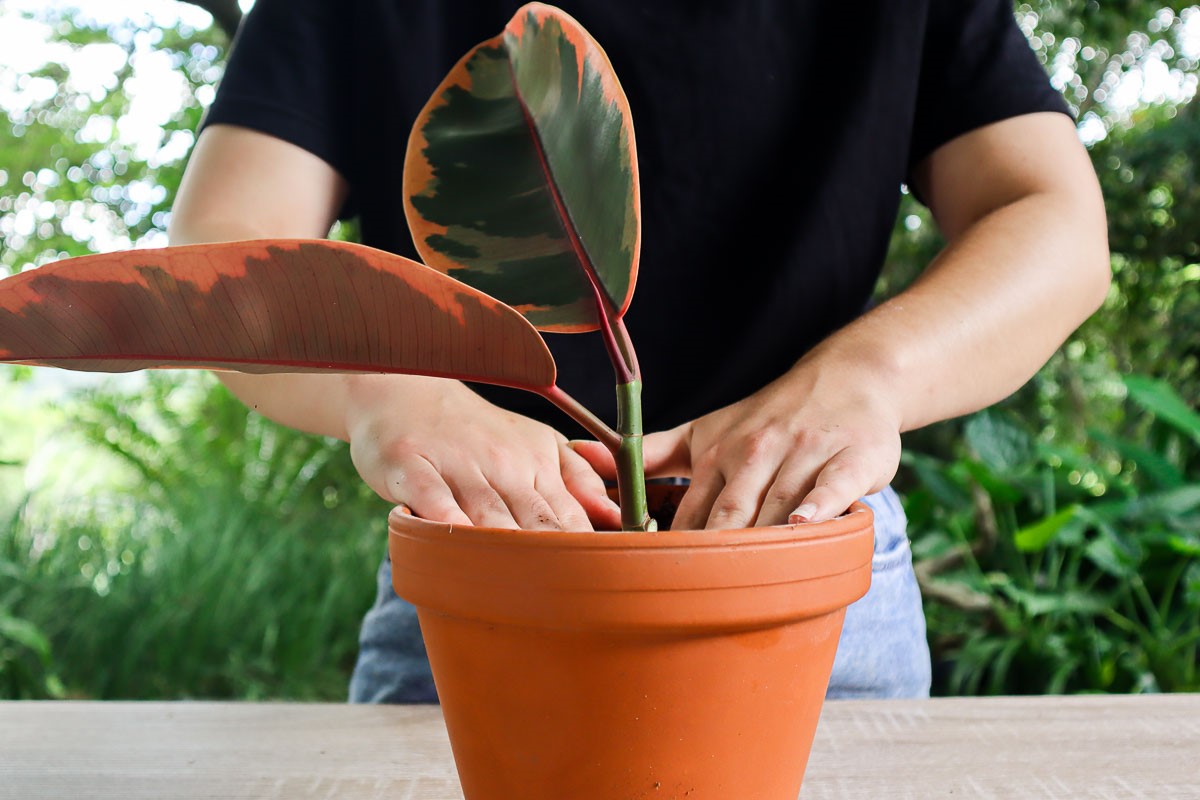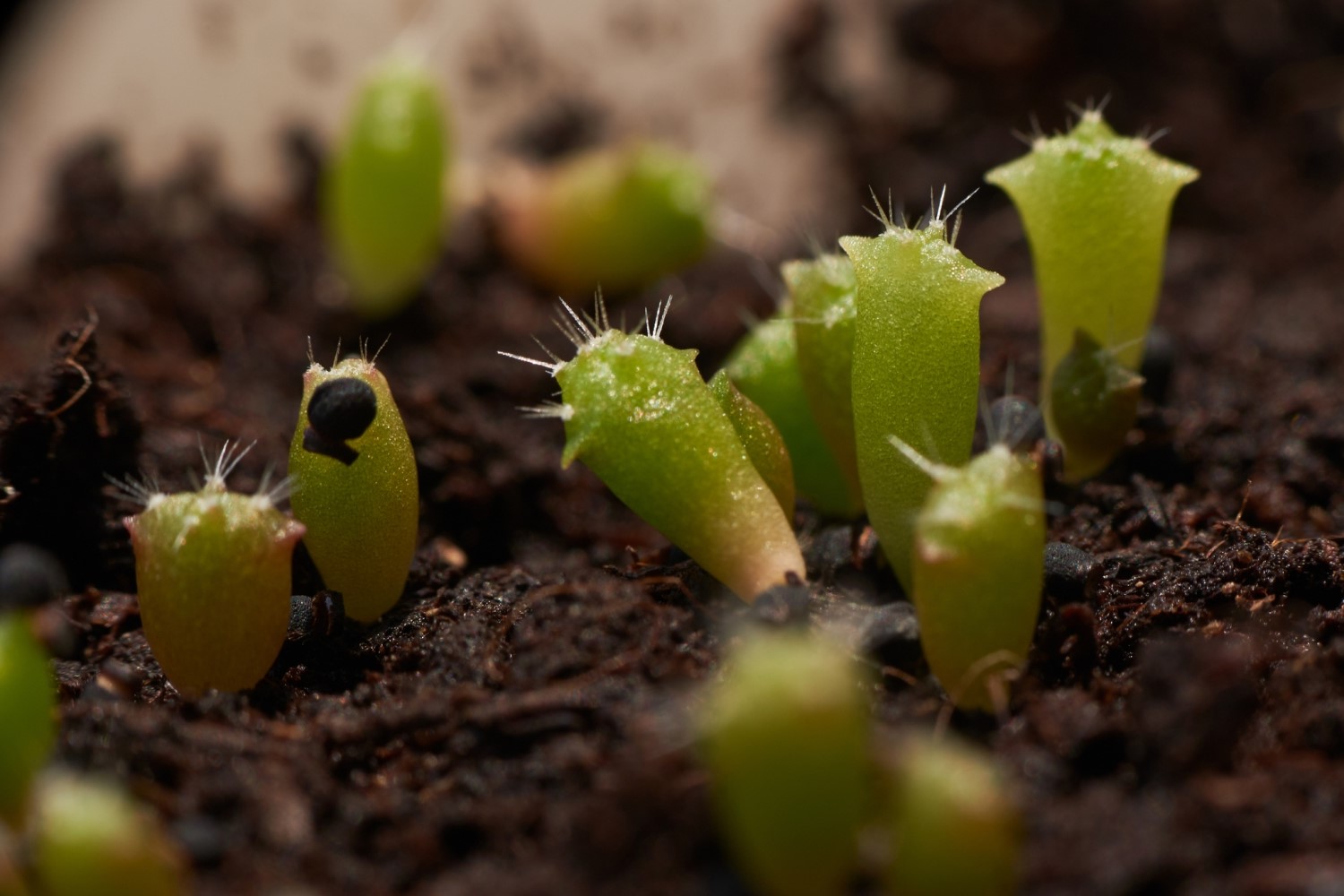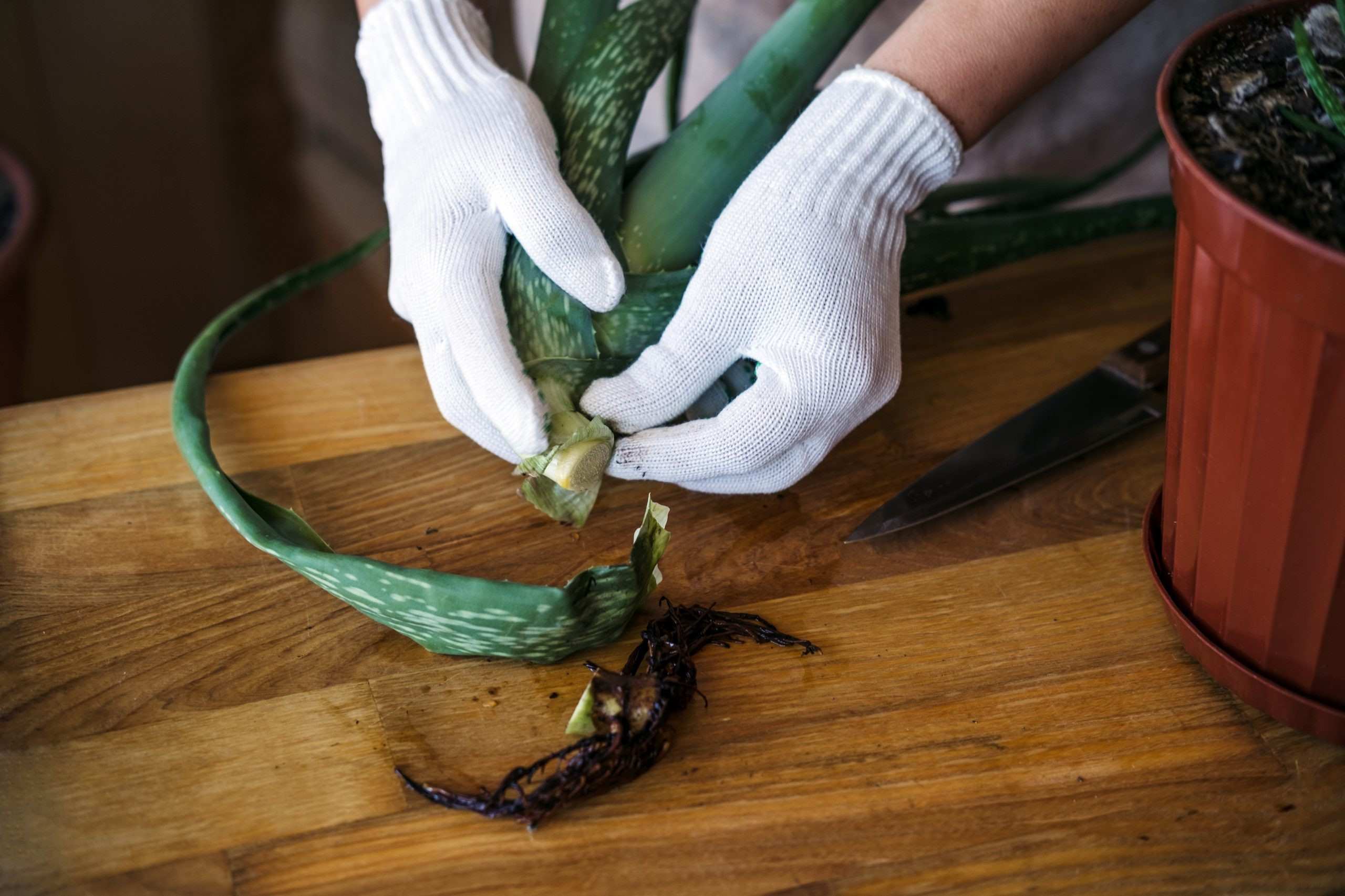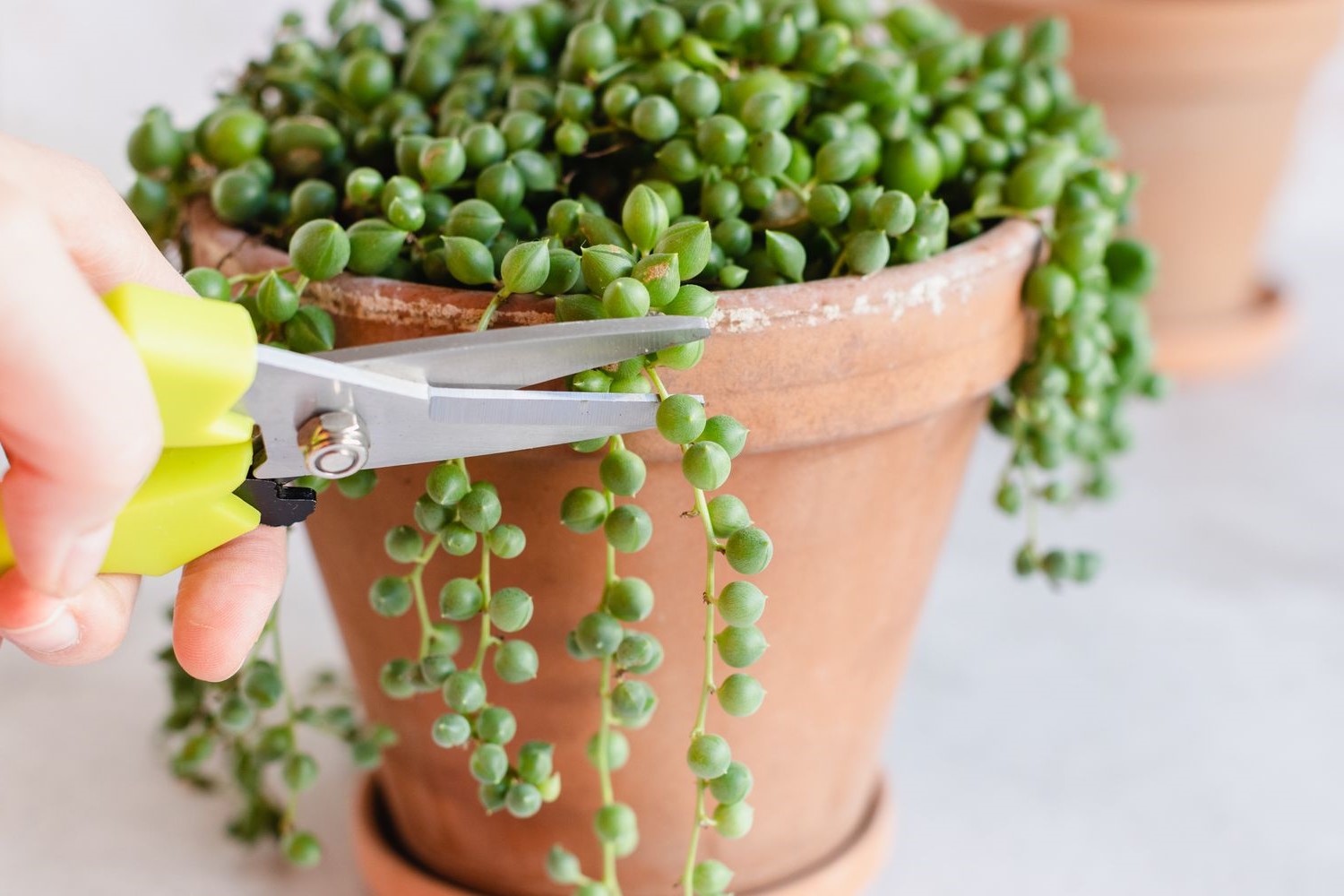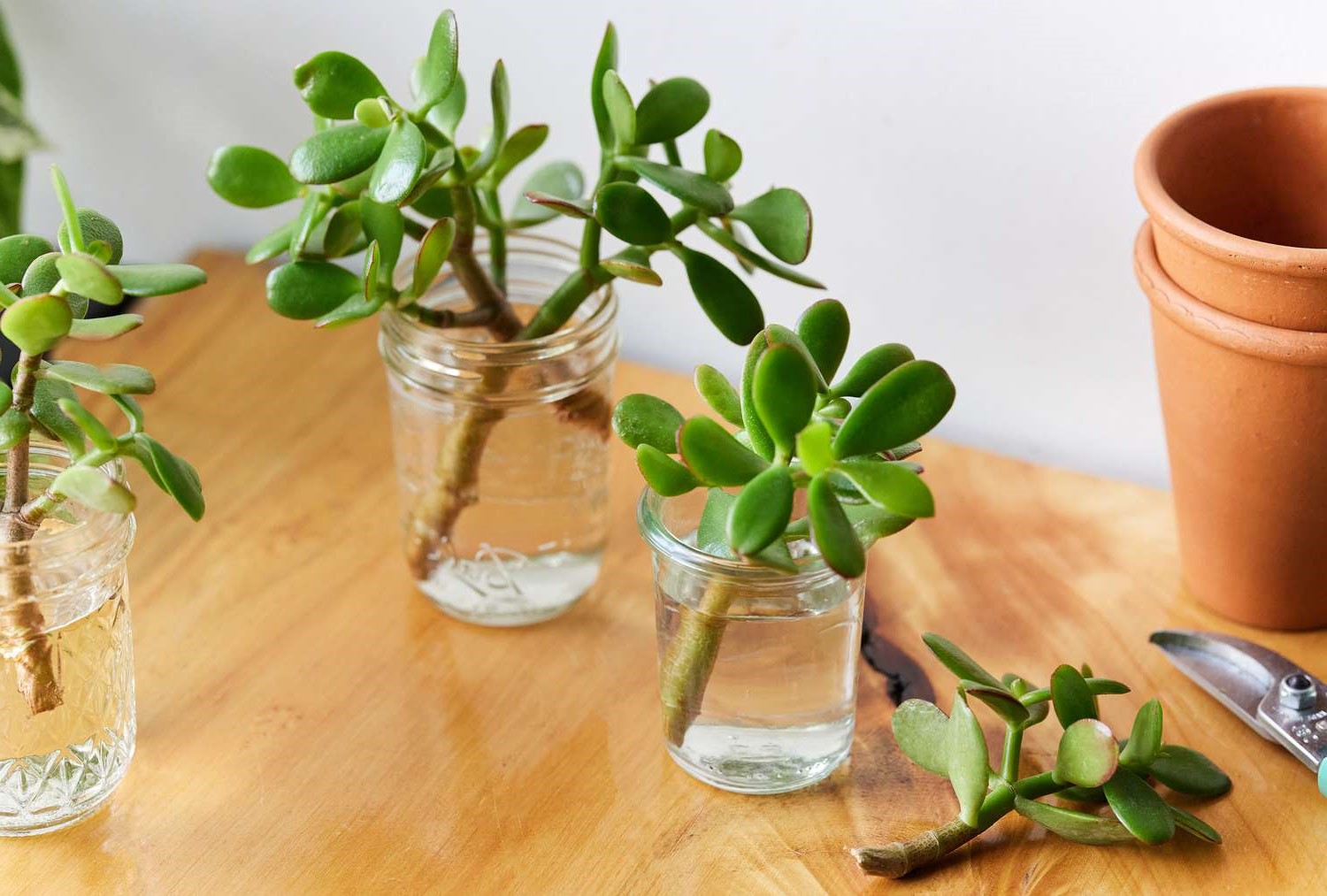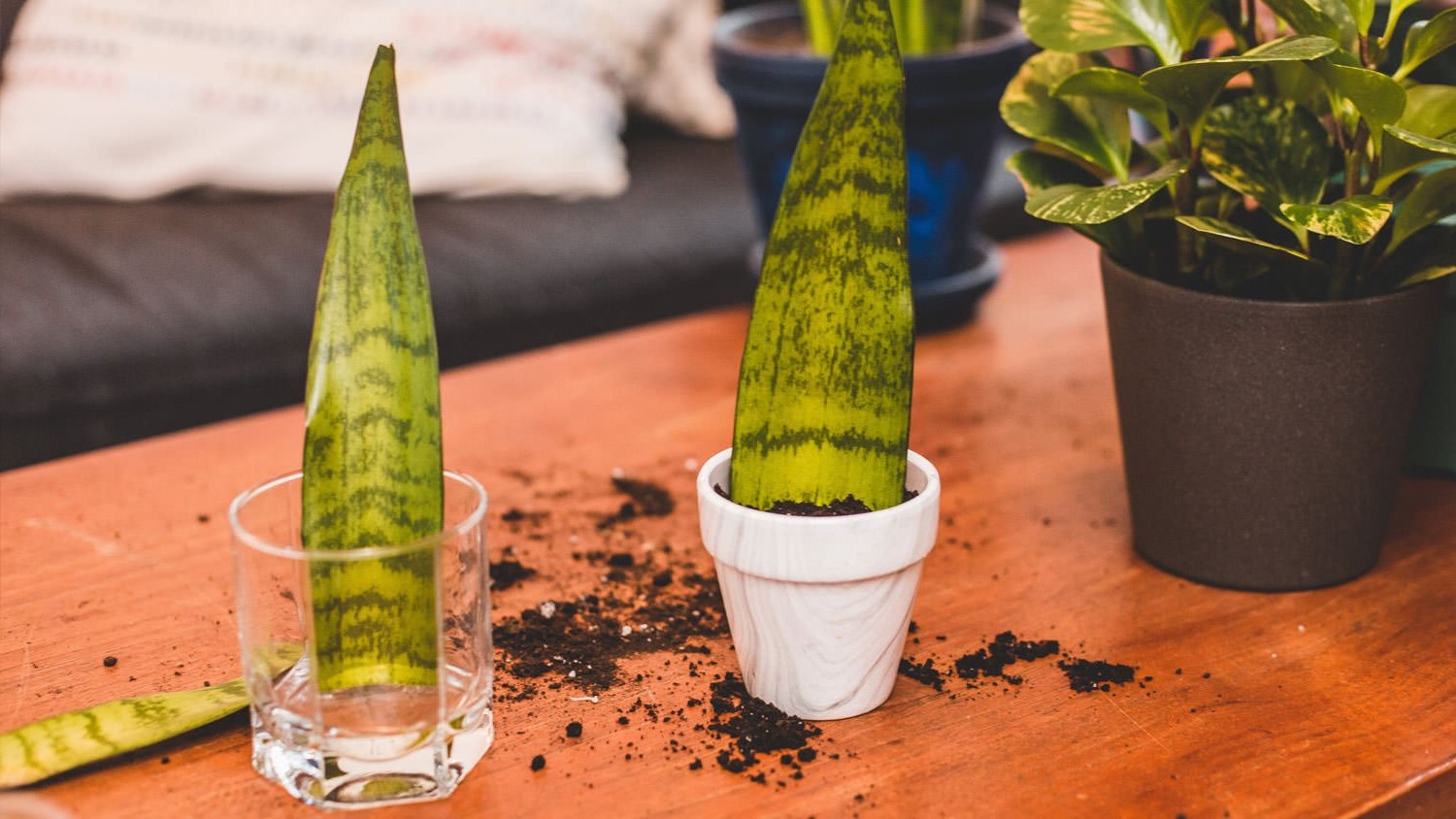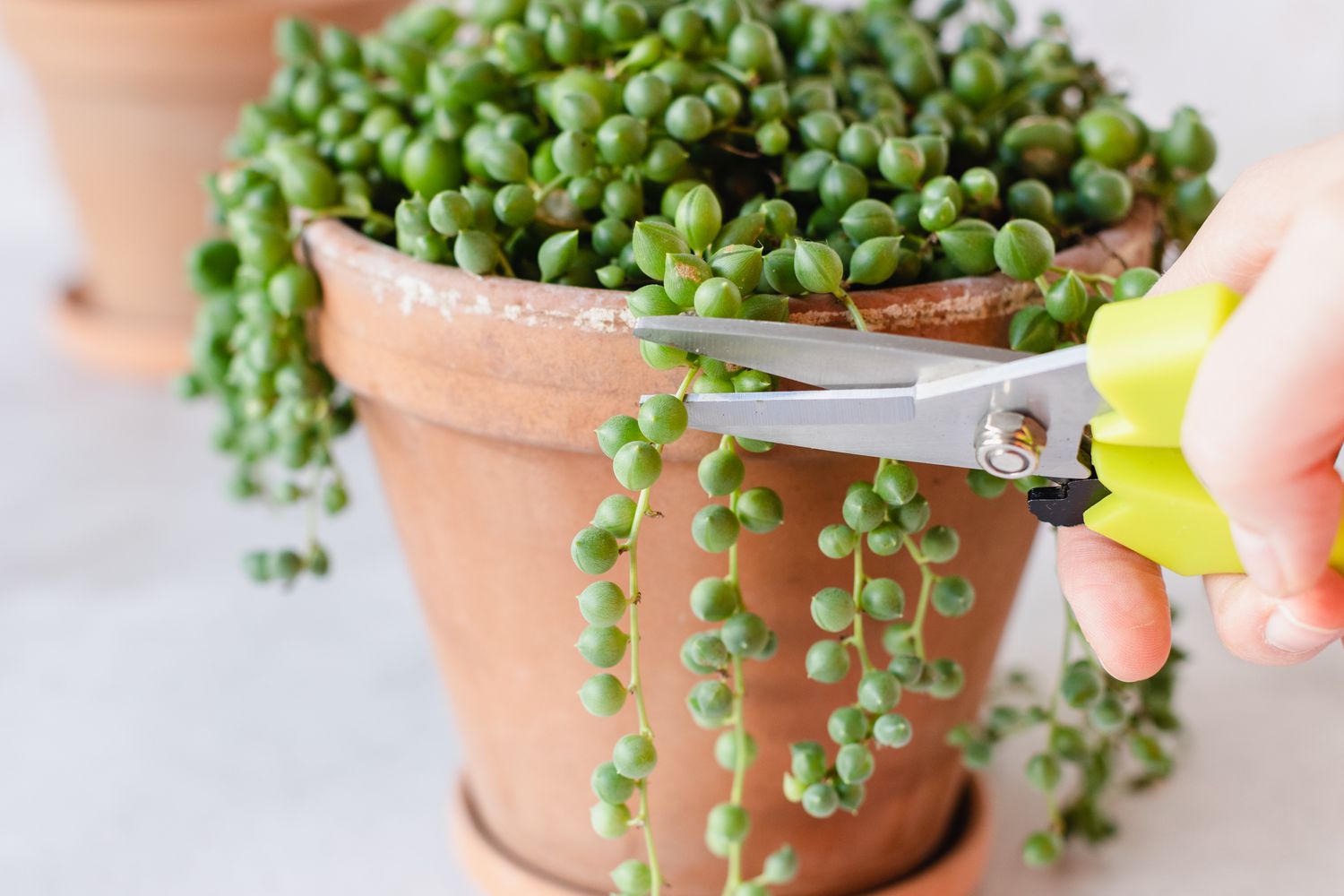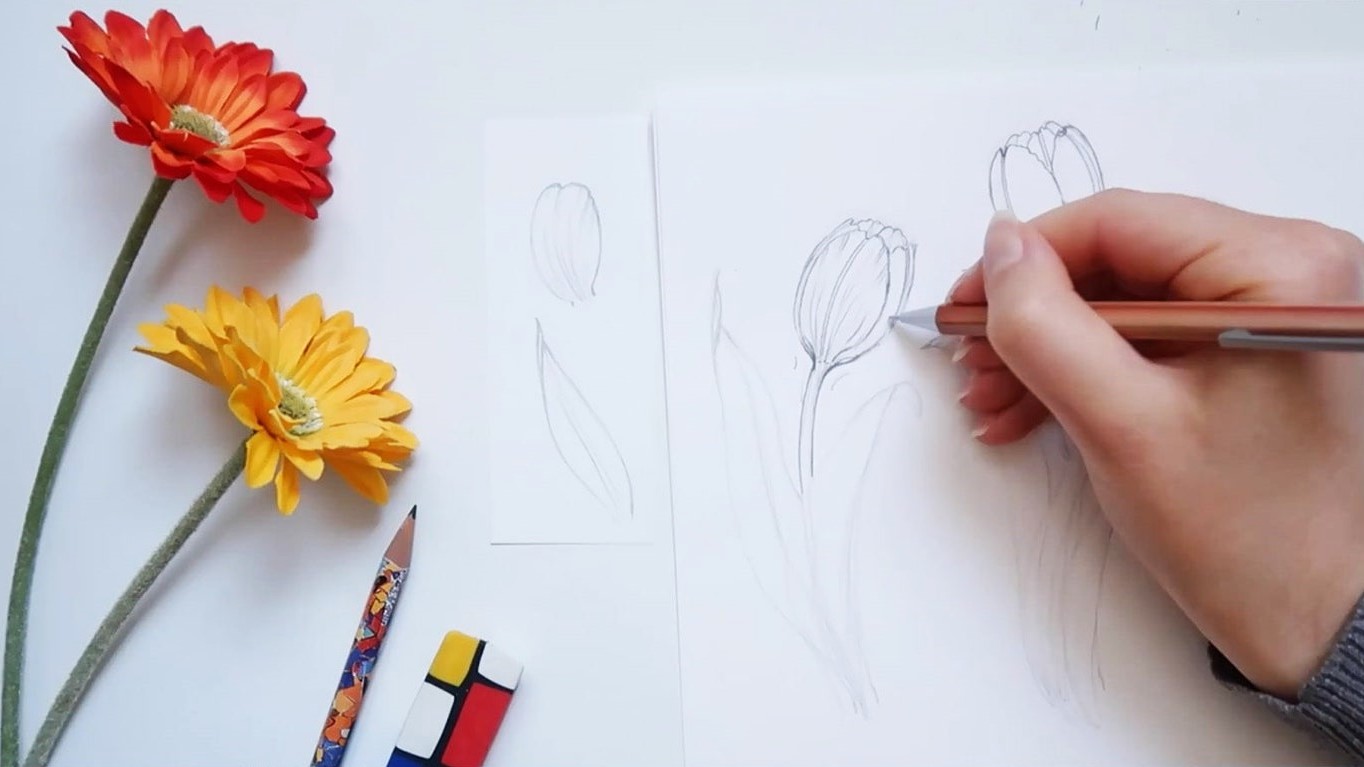Home>Home and Garden>How To Propagate A Fiddle Leaf Fig
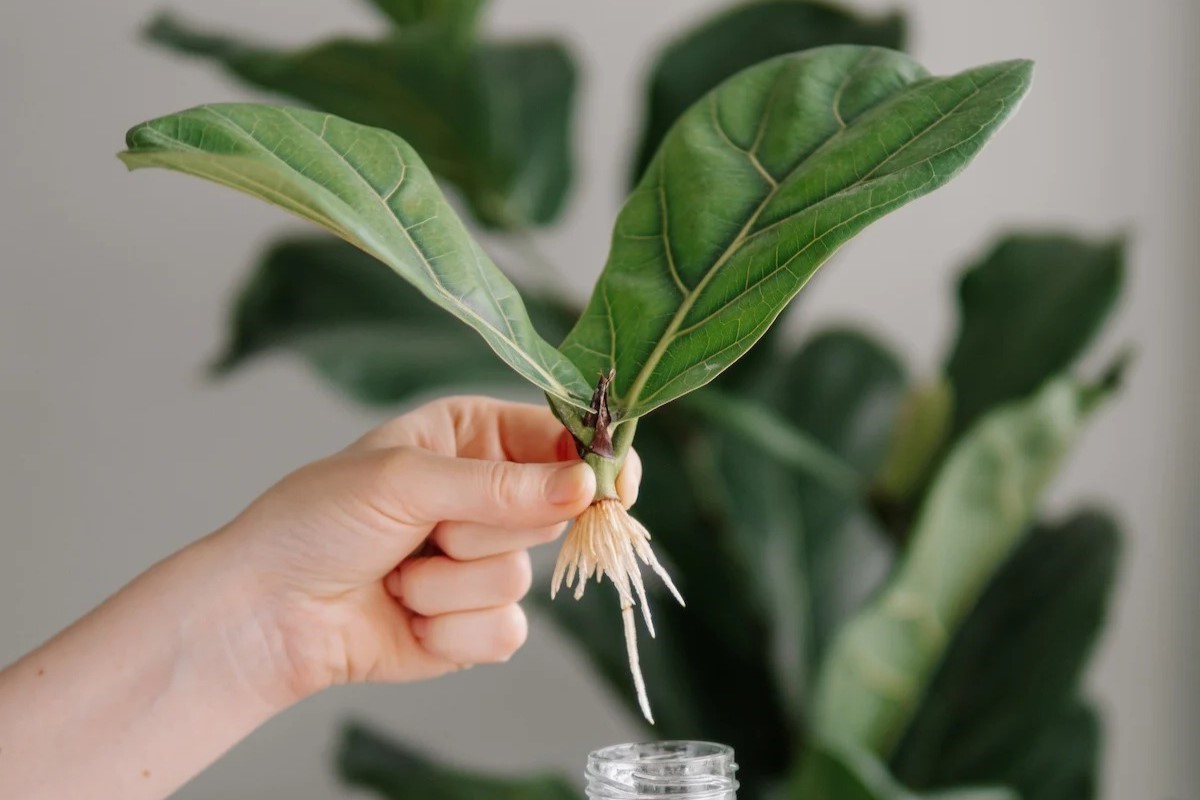

Home and Garden
How To Propagate A Fiddle Leaf Fig
Published: March 2, 2024
Learn how to propagate a fiddle leaf fig at home with our step-by-step guide. Discover the best methods for successful propagation in your garden.
(Many of the links in this article redirect to a specific reviewed product. Your purchase of these products through affiliate links helps to generate commission for Noodls.com, at no extra cost. Learn more)
Table of Contents
Introduction
Fiddle leaf figs, with their large, glossy leaves and striking appearance, have become a popular choice for indoor plant enthusiasts. These tropical plants, scientifically known as Ficus lyrata, are not only admired for their aesthetic appeal but also for their air-purifying properties. While purchasing a mature fiddle leaf fig from a nursery is a common practice, many plant enthusiasts are also keen on propagating these beauties at home.
Propagating a fiddle leaf fig can be a rewarding and fulfilling experience. It allows plant lovers to expand their collection, share plants with friends and family, or simply enjoy the process of nurturing new life. Additionally, propagating fiddle leaf figs can be a cost-effective way to grow new plants without having to purchase them.
Understanding the intricacies of fiddle leaf fig propagation is essential for success. This process involves creating new plants from existing ones, and it can be achieved through various methods such as stem cuttings, leaf cuttings, and air layering. Each method has its own set of requirements and techniques, and mastering them can significantly increase the chances of successful propagation.
In this comprehensive guide, we will delve into the art of propagating fiddle leaf figs, exploring the different methods, best practices, and essential care tips for nurturing newly propagated plants. Whether you're a seasoned plant enthusiast or a beginner looking to expand your green thumb, this guide will equip you with the knowledge and confidence to embark on your fiddle leaf fig propagation journey. So, let's roll up our sleeves and dive into the fascinating world of fiddle leaf fig propagation!
Understanding Fiddle Leaf Fig Propagation
Fiddle leaf fig propagation is the process of creating new plants from existing ones, allowing plant enthusiasts to expand their collection and share the beauty of these stunning tropical plants. Understanding the fundamentals of fiddle leaf fig propagation is crucial for anyone looking to embark on this rewarding journey.
Fiddle leaf figs can be propagated through various methods, including stem cuttings, leaf cuttings, and air layering. Each method has its own set of requirements and techniques, and choosing the most suitable approach depends on factors such as the plant's health, the time of year, and the desired outcome.
When propagating fiddle leaf figs, it's essential to select a healthy and mature plant as the parent. Healthy plants are more likely to produce successful cuttings, ensuring the propagation process starts off on the right foot. Additionally, choosing the right time to propagate is crucial. Spring and early summer are generally considered the best times for propagation, as plants are actively growing during this period, promoting faster root development in the new cuttings.
Understanding the anatomy of a fiddle leaf fig is also important for successful propagation. The plant's nodes, where leaves and branches emerge, play a vital role in the propagation process. When taking cuttings, it's essential to include at least one node, as this is where new roots will develop. By understanding the plant's natural growth patterns and reproductive mechanisms, plant enthusiasts can optimize their propagation efforts for the best possible results.
Moreover, having a basic understanding of plant hormones and their role in propagation can be beneficial. Rooting hormones, which are available in various formulations, can be used to encourage the development of roots in cuttings, increasing the chances of successful propagation. Understanding how and when to apply rooting hormones can significantly improve the success rate of fiddle leaf fig propagation.
In essence, understanding fiddle leaf fig propagation involves familiarizing oneself with the plant's growth patterns, reproductive mechanisms, and the specific requirements of each propagation method. By gaining a deeper understanding of these fundamental aspects, plant enthusiasts can approach the propagation process with confidence and increase the likelihood of successfully growing new fiddle leaf fig plants.
Propagation Methods
Propagation methods for fiddle leaf figs offer plant enthusiasts a range of techniques to create new plants from existing ones. Each method has its own unique requirements and procedures, providing flexibility for propagators to choose the most suitable approach based on their preferences and the plant's condition.
Propagating from Stem Cuttings
Stem cuttings are one of the most popular and reliable methods for propagating fiddle leaf figs. This method involves taking a section of the plant's stem, typically 6-12 inches long, and encouraging it to develop roots in a suitable growing medium. When selecting a stem cutting, it's essential to choose a healthy, mature stem with several leaves and at least one node. The node is where roots will emerge, facilitating the growth of a new plant.
To propagate from stem cuttings, the lower leaves are usually removed to expose the nodes, and the cutting is then placed in a container filled with a well-draining, moist growing medium. It's important to keep the medium consistently moist and provide the cutting with indirect light to promote root development. Using a rooting hormone can also enhance the success rate of root formation in stem cuttings.
Propagating from Leaf Cuttings
Propagating fiddle leaf figs from leaf cuttings is another viable method that allows propagators to create new plants from individual leaves. This method involves carefully removing a healthy leaf from the parent plant and encouraging it to produce roots and eventually develop into a new plant. While leaf cuttings may take longer to establish roots compared to stem cuttings, they can be a rewarding and successful propagation method when executed with care.
When propagating from leaf cuttings, it's crucial to select a healthy, undamaged leaf and ensure that the petiole, the leaf's stalk, is intact. The leaf is then placed in a container with a suitable growing medium, ensuring that the petiole is inserted into the medium to encourage root development. Providing consistent moisture and indirect light is essential for the successful propagation of leaf cuttings.
Read more: How To Propagate Hydrangeas
Propagating from Air Layering
Air layering is a less common but effective propagation method that involves creating a new plant from a branch of the parent plant while it is still attached. This method is particularly useful for larger, more established fiddle leaf figs with thick stems, as it allows propagators to create new plants without having to detach a section of the parent plant.
To propagate from air layering, a small section of bark is removed from a branch, and a rooting hormone may be applied to encourage root development. The exposed area is then covered with a moist growing medium and wrapped with plastic to create a conducive environment for root formation. Once roots have developed, the new plant can be separated from the parent and potted separately.
Each propagation method offers its own set of advantages and considerations, allowing plant enthusiasts to choose the most suitable approach based on their preferences and the specific characteristics of the parent plant. By understanding the intricacies of each method and following best practices, propagators can successfully create new fiddle leaf fig plants and expand their greenery with confidence.
Propagating from Stem Cuttings
Propagating fiddle leaf figs from stem cuttings is a popular and reliable method that offers plant enthusiasts an effective way to create new plants from existing ones. This propagation technique involves taking a section of the plant's stem, typically 6-12 inches long, and encouraging it to develop roots in a suitable growing medium. Stem cuttings are often favored for their relatively high success rate and the ability to produce new plants that closely resemble the parent plant.
When selecting a stem cutting for propagation, it's crucial to choose a healthy and mature stem with several leaves and at least one node. The node, where leaves and branches emerge, plays a vital role in root development and is essential for the successful propagation of fiddle leaf figs. By including at least one node in the cutting, propagators create the opportunity for new roots to emerge, facilitating the growth of a new plant.
Once a suitable stem cutting has been selected, the lower leaves are typically removed to expose the nodes, and the cutting is then placed in a container filled with a well-draining, moist growing medium. It's important to ensure that the growing medium provides adequate support for the cutting while allowing for the development of new roots. Additionally, maintaining consistent moisture in the growing medium is essential for promoting root development in the cutting.
Providing the stem cutting with indirect light is also crucial during the propagation process. While direct sunlight can be too intense and potentially harmful to the cutting, indirect light helps stimulate the growth of new roots and supports the overall health of the cutting. By creating a conducive environment with appropriate lighting conditions, propagators can optimize the chances of successful root development in the stem cutting.
Using a rooting hormone can further enhance the success rate of root formation in stem cuttings. Rooting hormones are available in various formulations and are designed to stimulate root growth in plant cuttings. By applying a rooting hormone to the cut end of the stem cutting before planting it in the growing medium, propagators can increase the likelihood of successful root development and overall propagation success.
In essence, propagating fiddle leaf figs from stem cuttings requires careful selection of a healthy stem, attention to the presence of nodes, the use of a suitable growing medium, and the provision of adequate moisture and indirect light. By following best practices and understanding the specific requirements of stem cuttings, plant enthusiasts can successfully create new fiddle leaf fig plants through this rewarding propagation method.
Propagating from Leaf Cuttings
Propagating fiddle leaf figs from leaf cuttings offers plant enthusiasts an intriguing method to create new plants from individual leaves. While this propagation technique may take longer to establish roots compared to stem cuttings, it can be a rewarding and successful approach when executed with care and patience.
When propagating from leaf cuttings, the first step is to carefully select a healthy and undamaged leaf from the parent plant. It's essential to ensure that the petiole, the leaf's stalk, is intact, as this part plays a crucial role in the propagation process. The selected leaf is then prepared for propagation, typically by making a clean cut at the base of the petiole to create a fresh surface for root development.
Once the leaf cutting is prepared, it is placed in a container filled with a suitable growing medium. The petiole is inserted into the growing medium, ensuring that it is positioned securely to encourage root development. Providing consistent moisture in the growing medium is essential for the successful propagation of leaf cuttings. The medium should be kept moist but not waterlogged, creating an environment conducive to root formation.
In addition to moisture, providing the leaf cutting with indirect light is crucial for its successful propagation. Indirect light stimulates the growth of new roots and supports the overall health of the cutting. By placing the container in a location with indirect light, propagators create an optimal environment for the leaf cutting to develop roots and eventually grow into a new plant.
Throughout the propagation process, patience is key. Leaf cuttings may take several weeks to establish roots, and it's important to monitor the cutting's progress and provide the necessary care and attention. While the process may require time and patience, successfully propagating fiddle leaf figs from leaf cuttings can be a deeply rewarding experience, allowing plant enthusiasts to witness the growth and development of new plants from individual leaves.
In essence, propagating fiddle leaf figs from leaf cuttings involves careful selection of a healthy leaf, attention to the integrity of the petiole, the use of a suitable growing medium, and the provision of consistent moisture and indirect light. By following best practices and exercising patience, plant enthusiasts can successfully create new fiddle leaf fig plants through this captivating propagation method.
Propagating from Air Layering
Propagating fiddle leaf figs from air layering presents a unique and effective method for creating new plants from a branch of the parent plant while it is still attached. This technique is particularly advantageous for larger, more established fiddle leaf figs with thick stems, as it allows propagators to create new plants without having to detach a section of the parent plant.
The process of air layering begins by selecting a suitable branch on the parent plant. A small section of bark is carefully removed from the selected branch, typically a few inches in length. This exposed area is where the roots will develop, and it's essential to ensure that the removal of bark is done meticulously to avoid damaging the underlying tissues.
Once the bark has been removed, a rooting hormone may be applied to the exposed area to encourage the development of roots. Rooting hormones are available in various formulations and are designed to stimulate root growth in plant cuttings. By applying a rooting hormone to the exposed area, propagators can enhance the likelihood of successful root formation, ultimately leading to the establishment of a new plant.
After applying the rooting hormone, the exposed area is covered with a moist growing medium, such as sphagnum moss or a mixture of peat and perlite. The growing medium is then wrapped with plastic to create a conducive environment for root formation. This wrapping helps retain moisture and provides a protective barrier for the developing roots.
Throughout the air layering process, it's important to monitor the development of roots, ensuring that the growing medium remains consistently moist and that the plastic wrapping is secure. The presence of new roots can typically be observed through the plastic wrapping, indicating that the propagation process is progressing successfully.
Once roots have developed sufficiently, the new plant can be separated from the parent plant and potted separately. Care should be taken to ensure that the newly propagated plant receives appropriate care and attention as it transitions to its new pot.
In essence, air layering offers a practical and efficient method for propagating fiddle leaf figs, particularly for larger and more established plants. By following the steps involved in air layering and providing the necessary care and attention, plant enthusiasts can successfully create new fiddle leaf fig plants through this innovative propagation method.
Read more: How To Draw A Leaf
Caring for Newly Propagated Fiddle Leaf Fig Plants
Caring for newly propagated fiddle leaf fig plants is a crucial aspect of the propagation process, as it directly impacts the successful establishment and growth of the new plants. Once the propagation method has been completed and the new plants have been established, providing appropriate care and attention is essential for their well-being.
Newly propagated fiddle leaf fig plants require a nurturing environment to support their transition and encourage healthy growth. Here are essential care tips for ensuring the well-being of newly propagated fiddle leaf fig plants:
1. Optimal Light Conditions
Placing the newly propagated plants in an environment with indirect, bright light is crucial for their growth. Avoid exposing them to direct sunlight, as it can be too intense and potentially harmful. Providing consistent, gentle light supports the development of new leaves and overall plant health.
2. Adequate Watering
Maintaining appropriate moisture levels in the growing medium is essential for the newly propagated plants. While it's important to keep the soil consistently moist, overwatering should be avoided to prevent root rot. Monitoring the soil moisture and adjusting the watering frequency based on the plant's needs is key to promoting healthy growth.
3. Humidity
Fiddle leaf figs thrive in environments with moderate to high humidity. To create a conducive humidity level for the newly propagated plants, misting the leaves or placing a humidifier nearby can be beneficial. Adequate humidity supports leaf health and overall plant vigor.
Read more: How To Propagate Monstera
4. Temperature Considerations
Providing a stable and warm environment is important for the well-being of newly propagated fiddle leaf fig plants. Avoid exposing them to temperature extremes or drafts, as these can stress the plants. Maintaining a consistent, moderate temperature promotes healthy growth and overall plant resilience.
5. Fertilization
Once the newly propagated plants have become established, providing a balanced, water-soluble fertilizer can support their growth. However, it's important to follow the recommended dilution and application frequency to avoid over-fertilization, which can be detrimental to the plants.
By implementing these care tips and providing the necessary attention, plant enthusiasts can ensure the successful establishment and growth of newly propagated fiddle leaf fig plants. Monitoring the plants' progress, observing their response to care practices, and making adjustments as needed are integral parts of nurturing these new additions to the greenery. With proper care, the newly propagated fiddle leaf fig plants can flourish and become thriving members of the indoor plant collection.
Conclusion
In conclusion, the art of propagating fiddle leaf figs is a fascinating journey that offers plant enthusiasts the opportunity to create new plants, expand their greenery, and share the beauty of these tropical wonders. Understanding the intricacies of fiddle leaf fig propagation, including the various methods and essential care practices, is essential for achieving successful results and nurturing the newly propagated plants to maturity.
Throughout this comprehensive guide, we have explored the fundamental aspects of fiddle leaf fig propagation, delving into the methods of stem cuttings, leaf cuttings, and air layering. Each method presents its own set of advantages and considerations, providing plant enthusiasts with a range of techniques to choose from based on their preferences and the specific characteristics of the parent plant. By understanding the requirements and best practices associated with each propagation method, propagators can approach the process with confidence and increase the likelihood of successful propagation.
Furthermore, caring for newly propagated fiddle leaf fig plants is a critical aspect of the propagation journey. Providing optimal light conditions, adequate watering, humidity, temperature considerations, and appropriate fertilization supports the successful establishment and growth of the new plants. By implementing these care practices and closely monitoring the plants' progress, plant enthusiasts can ensure that the newly propagated fiddle leaf figs thrive and become integral members of their indoor plant collection.
Embarking on the journey of fiddle leaf fig propagation is not only a means of expanding one's greenery but also a deeply rewarding experience that fosters a deeper connection with nature. From carefully selecting the parent plant to witnessing the growth of new roots and leaves in the propagated plants, the propagation process offers a sense of fulfillment and accomplishment. It also provides an opportunity to share the beauty of fiddle leaf figs with others, whether through gifting propagated plants or simply sharing the knowledge and experience gained from the propagation journey.
Ultimately, the art of propagating fiddle leaf figs is a testament to the resilience and beauty of nature, as well as the joy of nurturing new life. Whether for personal enjoyment, expanding one's plant collection, or sharing the love of plants with others, fiddle leaf fig propagation is a captivating and fulfilling endeavor that allows plant enthusiasts to deepen their connection with these remarkable tropical plants.
